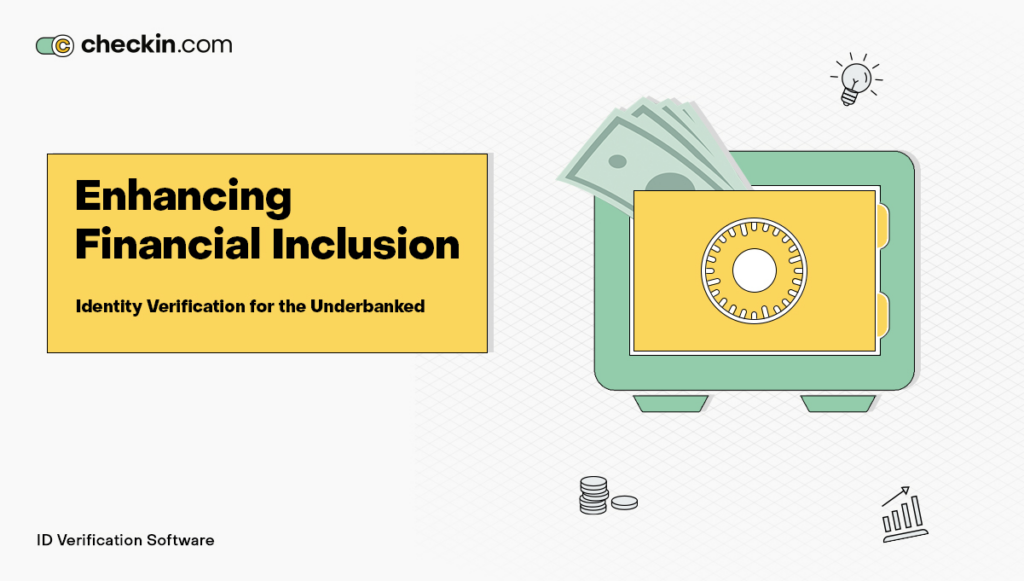In an increasingly digital world, identity verification is a fundamental requirement for accessing various services and participating in the global economy. However, a significant portion of the population known as the underbanked faces unique challenges in verifying their identities due to limited access to traditional financial services.
This article explores the concept of id verification service for the underbanked, delves into the obstacles they encounter, and highlights the innovative solutions being developed to address these issues and foster financial inclusion.
Understanding the Underbanked Population
The underbanked population consists of individuals who have limited access to formal banking services, which restricts their full participation in the financial system.
Relying on alternative financial services such as payday lenders, check cashing services, and money transfer agents, they often lack traditional bank accounts or have minimal interaction with mainstream financial institutions.
Challenges in Identity Verification for the Underbanked
Identity verification presents significant hurdles for the underbanked, primarily due to their limited access to traditional financial services.
Many verification processes require documentation that the underbanked may not possess, such as government-issued identification or proof of address. This absence of documentation creates barriers to essential services, including opening bank accounts, securing loans, or even gaining employment.
Innovative Solutions for Identity Verification
Acknowledging the importance of financial inclusion, service providers are developing innovative solutions to address the identity verification needs of the underbanked. These solutions harness technology and alternative data sources to establish reliable identities for individuals with limited access to traditional financial services. Here are some notable examples:
- Digital Identity Solutions: Service providers are creating digital identity platforms that enable individuals to create and manage their identities using alternative forms of verification. These platforms may utilize biometric data, such as fingerprint or facial recognition, in conjunction with other data points to establish secure and verifiable identities. These digital identity platforms offer a convenient and secure way for underbanked individuals to verify their identities.
- Mobile-Based Solutions: With the widespread adoption of mobile technology, service providers are leveraging smartphones to facilitate identity verification for the underbanked. Mobile-based solutions allow individuals to remotely verify their identities using their mobile devices, eliminating the need for physical documentation. These mobile-based solutions provide flexibility and accessibility for identity verification, ensuring that underbanked individuals can easily verify their identities without traditional documentation.
[postbanner]
Conclusion
Identity verification for the underbanked is a crucial component of promoting financial inclusion and empowering individuals with limited access to traditional financial services. Through the development of innovative solutions, service providers are addressing the unique challenges faced by the underbanked population, enabling them to establish reliable identities and access essential financial services.
By leveraging technology, alternative data sources, and user-centric approaches, we can bridge the identity verification gap and create a more inclusive financial ecosystem. The future of identity verification lies in solutions that prioritize accessibility, security, and empowerment for the underbanked population.
By crafting this article, our objective was to engage readers and provide a comprehensive understanding of the challenges faced by the underbanked population in identity verification, as well as the promising solutions being developed to overcome these challenges. Through promoting financial inclusion, we strive for a more equitable society where everyone has access to the financial services necessary for their growth and well-being.
FAQ
Are alternative identity verification solutions secure?
Yes, alternative identity verification solutions prioritize security by employing robust encryption, data protection measures, and stringent privacy protocols. Service providers understand the significance of safeguarding personal information and implement stringent security measures to protect user data.
How do these solutions promote financial inclusion?
These solutions promote financial inclusion by offering alternative methods of identity verification, thus enabling the underbanked population to access essential financial services. By breaking down the barriers imposed by traditional verification processes, individuals gain access to banking services, loans, and other financial opportunities that empower them and contribute to their overall financial well-being.
What documents are required for identity verification for the underbanked?
Identity verification solutions for the underbanked typically rely on alternative forms of documentation. Instead of traditional bank statements or utility bills, individuals may be required to provide other proofs of identity, such as government-issued identification cards, social security numbers, or verifiable digital profiles.


